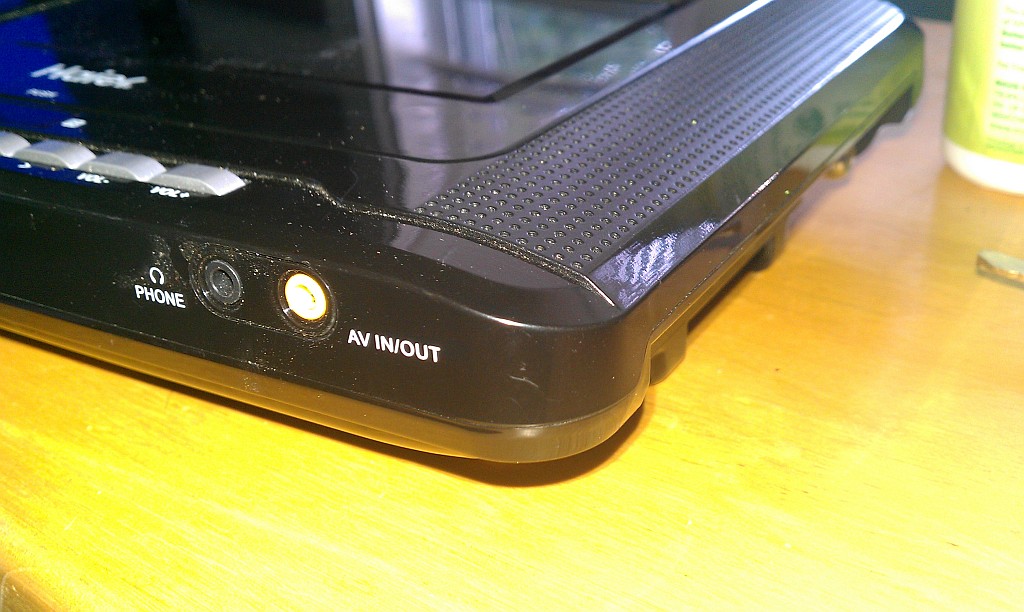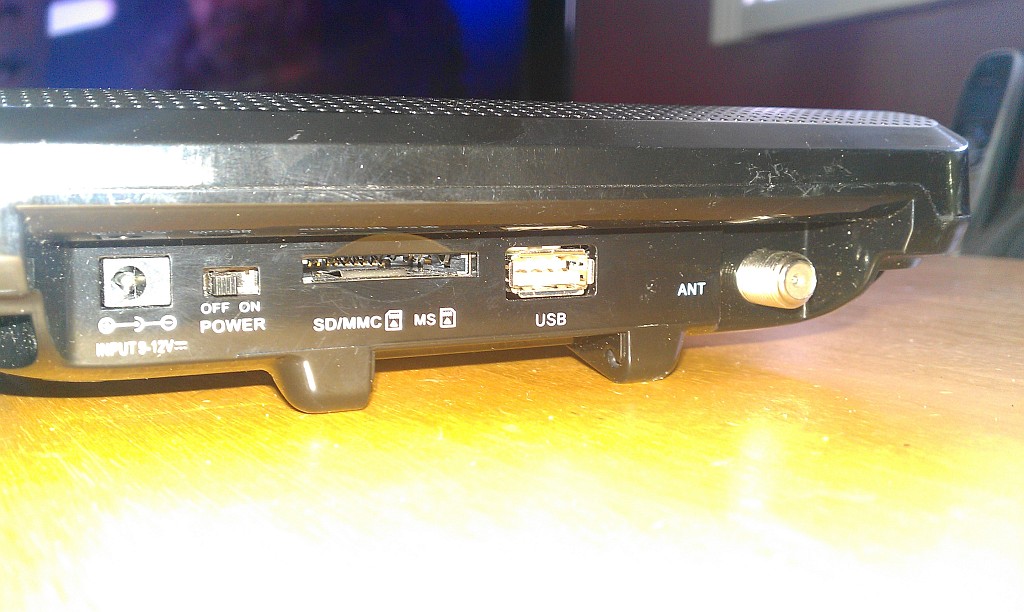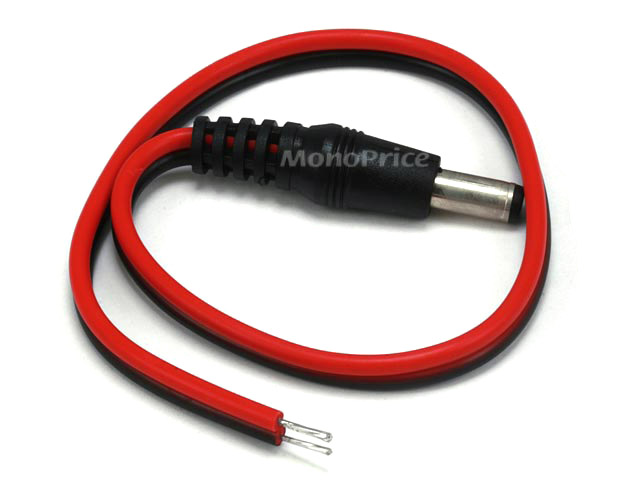

Soundy
-
Content Count
20 -
Joined
-
Last visited
-
Days Won
1
Posts posted by Soundy
-
-
Haier-HLTD7Soundy, can you take a snapshot of the inputs on this? Looking online and I cannot find the freakin' manual!
Thanks,


-
Probably. Remember to pull power wire as well.
-
Looks kinda soft...
-
Can always run your CNBs on 12V and just use an individual 24VAC transformer for the PTZ
There are lots of other brands besides Altronix as well - Enforcer, Pelco, etc. etc. But again, I suspect the issue (IF there is one) with your existing unit is the seller, not the brand name.
-
That's HDcctv, which is based on HD-SDI (Serial Digital Interface), a broadcast digital standard. It *IS NOT* analog. The cameras *ARE NOT* compatible with analog DVRs, and the HDcctv DVRs *ARE NOT* compatible with analog cameras (unless you get a hybrid DVR). In fact, the only place that brochure even mentions analog is in the specs for their hybrid units; nowhere do they claim they're doing HD with analog.
In theory, yes, HDcctv can use existing coax. In reality... it has to be high quality, undamaged cable for it to work at all, and it's more reliable with RG6 than with RG59, whereas most existing analog systems use RG59.
-
Ahh, good ol' fleaBay. Are you sure that's the original factory transformer in that thing?
I'd recommend returning it for a refund and buying one from a reputable dealer.
Or, just DIY - transformer and fused breakout board, there's really not much to it.
-
Something doesn't sound right if you're getting 2.3V loss at 13W over a mere 100'. Even using a single pair for power, you shouldn't see more than half of that.
And if your RMS readings are that far off, that would at most indicate a faulty or improper transformer in that unit... not that that's a bad model line. I've used dozens of Altronix power cans over the years, both 24VAC and 12VDC and even one or two 24VDC, never had an issue.
Anyway, I wouldn't worry about the CNBs... if memory serves, those will actually accept pretty much anything from 10 to 30V, AC or DC.
-
There's nothing wrong with that box; those are normal readings depending on the type of multimeter you're using, and the actual input voltage.
"Rated" voltage generally refers to RMS voltage of the sine wave. 24V RMS means a sine wave with about 34V peak voltage. While higher-end multimeters will give proper RMS readings, most cheaper ones rectify the voltage and then measure the DC output... except the waveform is bumpy and not steady. So, you end up with a reading somewhere between 24V and 34V, depending on how much filtering the meter puts on the signal.
The input voltage will have some effect as well, since an AC power supply is not regulated, but simply consists of a step-down transformer. In the case of a 120V-to-24V supply, that would be a 5:1 step-down... but if the input voltage varies, the output will vary accordingly.
-
controlers. Most seem to be 3 axis and I do not understand that but I found one controler that stated 4 axis.All help understanding will be greatly appreciated
gene
3 axis covers vertical , horizontal & rotational adjustment. Maybe the fourth axis covers the time domain so it can be used in the Tardis or the D'lorean for time travel
Be sure to check for a flux capacitor.
Some controllers have a "twist" knob on top that controls zoom... would that be your third, or fourth axis?
-
But one question, is this a normal behaviour in cctv installations?It is quite common when using a combination of baluns, central power supplies, and cameras that have a shared internal power and video ground.
Main question is, how to isolate this problem in the future? To use 220V AC cameras or to use ground loop isolators?The solution is to avoid any one of the above three factors. I tend to just avoid cameras that have this (what I would consider a) design flaw. Dual-voltage (12VDC/24VAC) and 24VAC-only cameras avoid it because the power and video grounds are isolated by necessity of design.
Keep in mind that this is just ONE type of ground loop... you can get similar symptoms by having a camera mounted to a grounded metal object (such as a metal building, light pole, etc.) when the camera's case is connected to the video ground.
-
Found one listing for that VDS2500 on fleaBay... $365 for the set. Also not cheap. Hence my statement:
you could get some sort of video matrixer that will encode both signals down the same line and decode them at the other end... that will be rare and expensive. -
Maybe a "Let me out", "I'm not dead" voice box thrown in for good measureMaybe a clip from this?
dGFXGwHsD_A
-
Soundy:We should start another thred with Pros and Cons of Embeded DVR vs PC/Capture card and then one for IP vs Analog.
There are lots of those already. Most of them go the same way as this one. Fact is, most of the "cons" on both sides are either overblown, or non-existent, but people keep repeating them. I'm not here to argue that one is ALWAYS better than the other, but it really grates on my when the same ridiculous, nonsensical, illogical myths get trotted out.
For this guy working on a budget keep your legacy wire,He wasn't asking about his legacy wire, he was asking about cameras he was planning to add and the wire to use for those. In that case, Cat5e is cheaper, easier to work with, and provides greater future flexibility.
replace cameras as needed, use a DVR that offers a 3 year warranty and use IR mini domes for any new camera install. This will be a budget friendly system that will last. The cameras and DVR's i use for this type of system are the Bosch advantage line. The below tools will help. You will spend a little more upfront but you will 5 years from now you will be happy you used this stuff.Oh yeah, I have a couple dozen Bosch domes sitting on my "used stuff" shelf... replaced most of them with CNB VCM-24VFs because the customer was less than impressed with their performance. You want them? I don't think I'll ever find a use for them.
-
sorry i thought the thread was WHY not cost or application.Post subject: Why Ip camera is better than analog?Right. And the answer is, it isn't always.
-
i know that to install cctv properly, i should test that the video signal at the DVR is 1V peak to peak.You mean I've been doing it wrong all these years?
I don't know anyone in this business who 'scopes a camera signal except maybe as a last troubleshooting method.
-
Found one in google maps. Couldn't find a way to download the image so I just did a screen shot.If you're linking to Dropbox, make sure the file is within your Public folder.
Edit: Ahh, it's showing now.
-
Ground loop isolators SHOULD help.
Separate power adapters almost certainly WILL help.
It's just a matter of which is more cost-effective and/or easier to obtain.
-
A few... none of which are particularly desirable or cost-effective.
You could plug both cameras in a switcher, quad, or multiplexer, and send either a split-screen view of them down the line, or toggle between them; either way, you won't get both of them full-time and at full-resolution.
Or you could get some sort of video matrixer that will encode both signals down the same line and decode them at the other end... that will be rare and expensive.
Or you could use IP cameras, or IP encoders, then use ethernet-over-coax adapters to run network over the coax line, then IP decoders at the other end to convert back to analog... but that's complex and expensive as well.
The most cost-effective overall would be to use the existing wire as a "fish" to pull in a new run of Cat5e; you can then run up to four cameras over that using baluns (assuming they're powered separately).
-
Google Maps, Google Earth, Bing! Maps, etc. Bing! Maps also has a "Bird's Eye View" that can give a different perspective that's sometimes useful. And Google Earth of course, gives you 3D views that you can tilt and rotate that can also be useful in some cases.
-
-
You can get HD resolution from analog cameras...
-
Why not just one system for all the cameras and be done with it?Since I have one DM system still working, I can repurpose it and have the new one hooked up to the cameras where we need to burn video to another device. Some of the cameras just catch activity from a distance and don't warrant burning video to another device.Does anyone know of any standalone hybrids with a good reputation?Dahua. They're normally found under a variety of other brand names.
-
Your boss doesn't pay for you work truck and gas?Half that, half gas stations... I'd rather they gave me free gas, it's worth moreSure... I'd use the free gas for myself
-
IP system do have a lot of issue that analog does not. If you build a closed network you cut down on the issues but IP system have a lot more parts thus a lot more room for error and failures.Bull$#!t. This is one of the persistent myths in the industry. There are no more parts, there are no extra points of failure... just different parts, different potential points of failure, different possible consequences... neither is any more or less reliable than the other.
Don't talk to me about switches failing and taking out all the cameras in one shot (a common fear I see spread) - I've had more capture cards fail than I have switches, with exactly the same result. Downside is, a capture card is more difficult and expensive to source and more work to replace.


Why Ip camera is better than analog?
in IP/Megapixel Cameras and Software Solutions
Posted
Man, the quality is stunning, I can actually see the engineer picking his nose when he should be watching the switching signals. I sense a major environmental disaster in the offing.
It's obvious we're watching a recording of a monitor displaying the train (although I can't tell if THAT is live or recorded)... I'm just not sure if the HDcctv camera is the one watching the train, or the monitor.